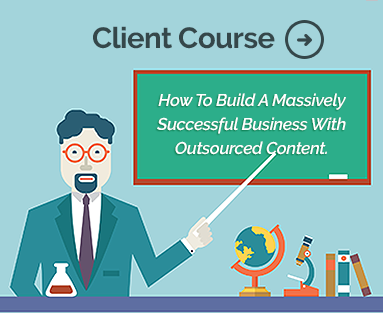What if your company had no way of determining if your marketing was effective or not?
Marketing makes up a large chunk of every major company’s budget. However, many of those companies have no way of knowing whether they are getting their money’s worth or not.
The only way to assess your marketing ROI is to use effective marketing metrics. If you are assessing the wrong metrics, then your marketing team will quickly end up back at square one.
Wondering how you can focus your marketing measurement on the right metrics? Keep reading to discover our complete guide!
The Metric Buffet
We’ve put together a very comprehensive list of the most effective marketing metrics. And it can seem intimidating when you first look at how many metrics are on here!
However, your company doesn’t need to focus on all of the metrics at all times. In fact, it’s more common to focus on certain metrics when you make changes to your marketing techniques and focus.
For example, factors such as open rate and click through rate are highly important for e-mail marketing campaigns. But if you are focusing more on social media than e-mail marketing, then you’ll be paying more attention to the social KPIs.
Ultimately, each one of these metrics can help with different facets of your marketing. But only you can decide which marketing tactics are most effective for your company at any given point.
1: CAC
We decided to start with one of the most important content marketing metrics of them all: the Customer Acquisition Cost.
The CAC is relatively easy to calculate. You simply add up all of your sales and marketing expenses (including salaries, commissions, and project budgets) over a fixed period of time. Then you divide that number by how many new customers you acquired in the same period.
This calculation gives you a baseline CAC. All of your marketing efforts should now include a simple goal: to reduce that number and spend less money per customer.
In a way, this is the biggest marketing KPI of all. As long as the CAC is shrinking, you know your company is making progress towards more effective marketing.
2: Open Rate
E-mail has always been a marketing paradox. On one hand, most people check their e-mail at least once a day, and it’s easy and cheap to send e-mail blasts to thousands of people.
On the other hand, many people delete unwanted e-mails on sight. Or they ignore them and let the unwanted messages pile up in their inbox.
That’s why it’s important to keep track of the Open Rate. Examine how many marketing e-mails your company sends out each month compared to how many people open them.
If you are focusing on e-mail marketing, then you’ll want to drive that Open Rate higher. And along the way, you’ll want to boost the Click Through Rate.
3: Click Through Rate
It’s great to see the Open Rate increasing for your e-mail marketing. However, getting prospective customers to open their e-mail is only half the battle.
The other key metric here is the Click Through Rate. This measures how many people have read through the e-mail and actually clicked on any of the links inside.
If your Open Rate is improving but your Click Through Rate is poor, that’s a sign that your marketing is using weak CTAs. Experiment with different CTAs until you find something that works well for your key demographics.
4: Marketing Percentage of CAC
Earlier, we mentioned the importance of the CAC. It is also important that you are able to further subdivide that calculation.
For example, CAC by itself includes both sales and marketing. But you should also add up just the marketing expenses and then divide that by the number of customers gained.
This gives you valuable insight as to how much marketing-only expenses go towards recruiting a single customer. Once you know how much this number is, you should monitor it for any unexpected changes.
As with CAC, you want this number to go down (or, at the very least, stay stable). If it is suddenly spiking up, the most likely cause is that either sales fell (reducing the number of customer conversions) or the marketing costs became overly bloated.
Once you diagnose what the problem is, it becomes that much easier to fix what has been going wrong with your marketing efforts.
5: Page Views
Sometimes, the simplest metrics are the most important ones. For example, you need to keep track of the page views for all of your key webpages.
As with the other metrics, you should use the initial measurement to create future goals. In this case, the goal is simply to increase those page views from month to month!
If the views do not go up or hold steady, it is a sign that your SEO is lagging behind. At that point, it may be worth considering changing up your keywords, using PPC, and/or revamping your website to optimize for SEO.
Don’t forget that high-quality and relevant content is always good for SEO!
6: Cost Per Click
Cost Per Click is a metric that is closely related to page views. It’s one thing to drive those page views up…but how much are you paying for it?
PPC (also known as CPC, or Cost Per Click) is an easy way to drive people to your website. However, you must bid on the keywords used, and some keywords cost more than others.
Keep track of how much you are spending on CPC and how much it is increasing your page views. To further assess CPC value, you’ll also want to follow up with things like time on page and bounce rates (more on these metrics in a minute).
7: Customer Lifetime Value
So far, the math we have used has been pretty simple. But for this next marketing KPI example, you may need to take out a calculator!
We’re trying to determine the ratio of any given customer’s lifetime value to your overall CAC. Focus on one of your biggest customers and figure out how much money you receive from the when the gross margin has been removed.
Divide that number by the estimated churn rate for such a customer. This new number is the lifetime value (or LTV) of that customer.
Now, we compare LTV and CAC to determine what the ratio is. If you spent $100,000 to acquire a customer and their LTV is $400,000, you have a 4:1 ratio.
Generally speaking, you are getting your money’s worth if you have a 3:1 ratio or above. If the ratio gets really high, though, beware: it may be a sign you are putting too many eggs in one basket and that you should diversify your customer base.
8: Bounce Rate
Let’s say that you’ve boosted your SEO, polished your calls to action, and rocked some PPC marketing. Now that more customers are on your sites, do they actually like what they see?
It’s important to determine how much time people are spending on each of your sites. This can give you insight into interest in your products and services as well as interest in the website design.
A related metric you should watch for is the bounce rate. This is, simply put, how quickly people are hitting the “back” button after they click on your website.
It’s easier said than done, but you want to ensure the “time on page” metric goes up and the “bounce rate” goes down. Pay special attention to these metrics during site redesigns and major marketing initiatives.
Remember, you can always hire professionals to boost your content and engage your customers.
9: Return On Engagement
When people talk about modern content marketing, there are two words that keep coming up: “social media.”
Social media provides a cheap and easy platform to create customer engagement. You can respond to direct messages very easily while creating an online community of like-minded consumers.
However, it’s important to measure whether you are getting much value out of social media. And that means measuring the Return on Engagement.
It’s a little tougher to calculate ROE than CAC because multiple factors are involved. For example, customer engagement is indicated by liking posts, sharing posts, commenting on posts, and even talking positively about your brand to others.
In short: while difficult, you want to make sure the engagement you are getting is worth the time you are putting into getting it!
10: Payback Time
Does your company charge customers some kind of ongoing fee or subscription? If so, you’ll want to measure the payback time to CAC.
For most products and services, you get your CAC investment back right away. As long as customers are spending more than you spent on them, then your company is fine.
However, industries relying on subscribers may have to pour more money into gaining new customers. This is because many customers are wary of taking on an additional ongoing expense.
If this sounds like your company, you’ll need to take your CAC and divide it by the monthly revenue (adjusted for margin) for each new customer. This lets you know how long it takes for you to get your money back on this customer investment.
Ideally, the number will be 12 or below. That means that you can turn a profit on a new customer within a year, and any time they spend after that as a customer is a pure profit for you.
11: Channel Visits
“Multichannel marketing” has been a buzzword for many years now. And it’s true that marketing across as many channels as possible helps you engage with customers in many different ways.
However, most companies don’t have the budget to market to each channel with the same intensity. That’s why it’s important to measure channel visits for each channel.
On the “macro” level, this helps you see which of your channels are performing well and which are not. This can help you determine where you will focus future marketing dollars.
On the “micro” level, this lets you see if channel visits go up or down as you make changes or create new content. This gives you fairly direct feedback as to how customers feel about what you are showing them.
12: Marketing-Originated and Influenced Customers
Once you know your CAC, you can calculate many other metrics. For example, it’s good to know about your marketing-originated and marketing-influenced customers.
To find your marketing-originated customers, take the number of new customers in a given time period and calculate how many of them came from a marketing-generated lead.
The goal here is easy to understand: you’ll want to increase those leads and monitor their performance as you make further tweaks to sales and marketing.
Marketing-influenced customers, meanwhile, are those who were influenced by marketing in any way (even if they didn’t come from a marketing-originated lead).
This number should be higher than the marketing-originated number and, like that number, there is always room for your company to grow!
13: Keyword Rankings
Earlier, we mentioned how you should always be working on your SEO. In order to understand whether that has been effective or not, you must pay attention to the keyword rankings.
When you get into the “nitty-gritty,” there are many confusing elements to SEO mastery. But keyword rankings are nice and simple: they measure where your webpage “ranks” when someone searches for a particular keyword.
The goal is easy to see but hard to reach: you want to be on the first page when customers complete their search. To do that, you’ll need to make better use of keywords, to complete meta descriptions, and to include links to solid authorities within your original and relevant content.
It can be a Herculean effort to revamp all of your webpages for SEO. Through it all, the keyword rankings provide a simple way of understanding whether your efforts are paying off or not.
Marketing Measurement Metrics: The Bottom Line
Now you know some of the key marketing measurement metrics. And there is one thing that holds many of them together: solid online content!
If you would like professionally-written content to boost your SEO and customer engagement, help is just a click away. All you have to do is contact us today and see what we can offer your brand!




Comments are closed.